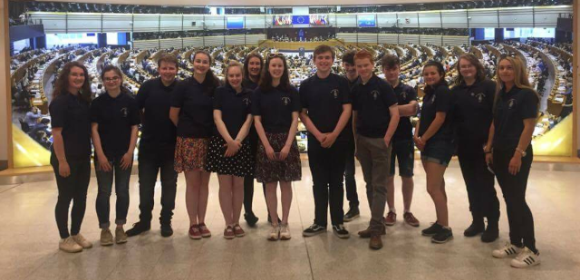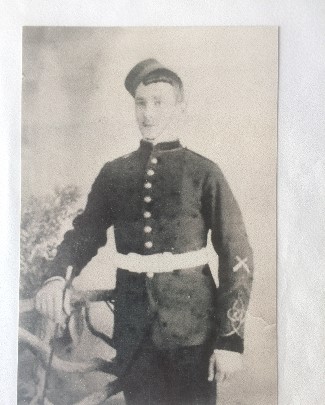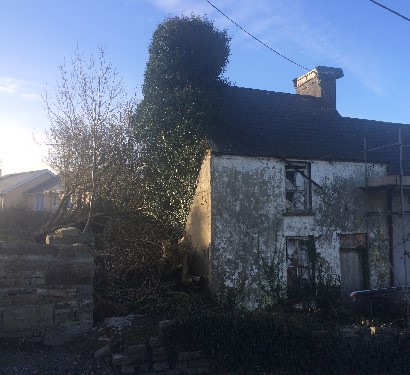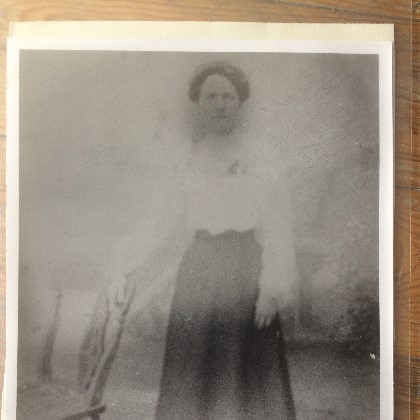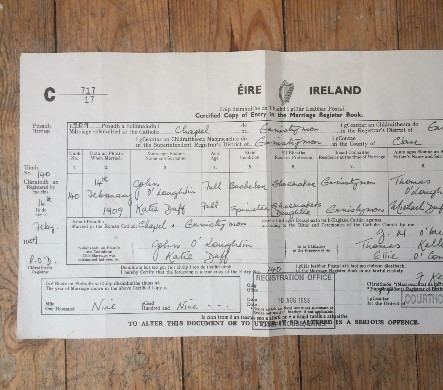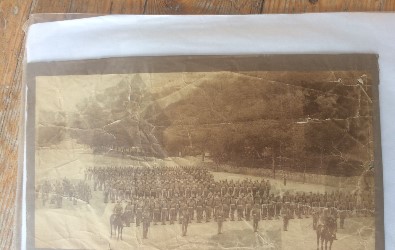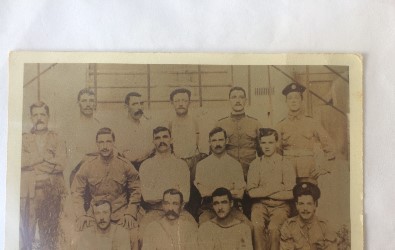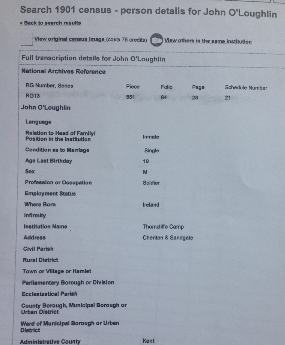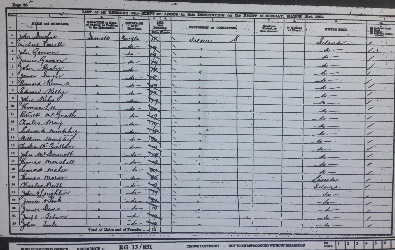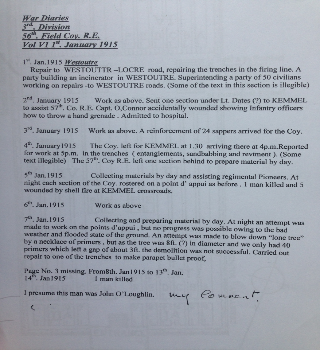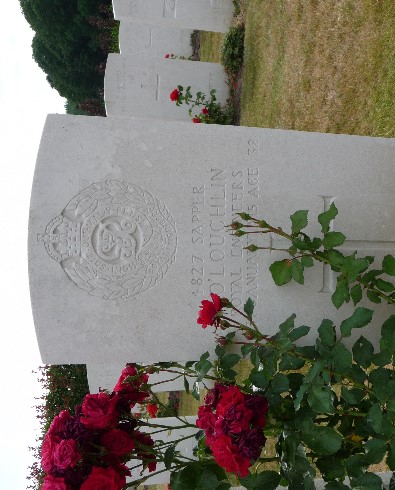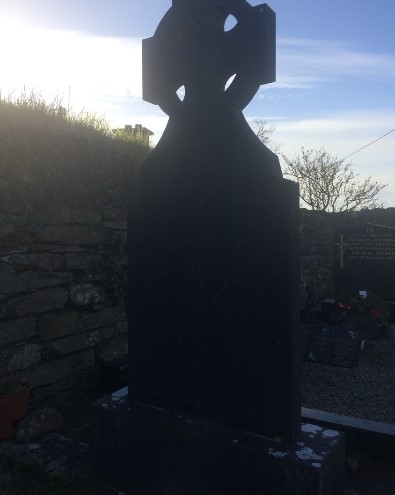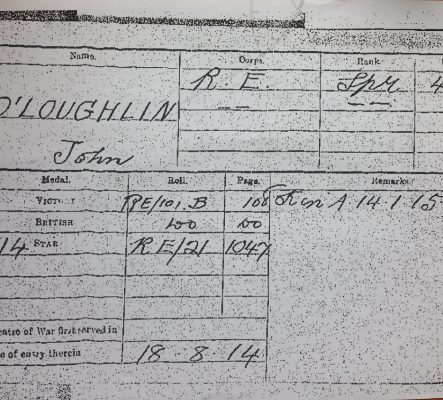I found out about the My Adopted Soldier project through my teacher and immediately decided I wanted to enter, and I can honestly say it was one of the best decisions of my life. This project was so special and I'd like to begin by thanking Gerry Moore and all his team for giving me this opportunity because it was incredible and I know I'll never forget it.
Research
Like many others on the project I used the census and genealogy sites, but I was also lucky enough to meet the grandson of my soldier, Michael O' Loughlin. After founding out where my soldier had lived, my parents and I drove up to Ennistymon to see if we could locate his home. Having found the street we proceeded to ask a man cutting his lawn if he know of the house or the family, we were extremely fortunate as he know both. He pointed out the house to us, which turned out to directly opposite, and also gave us directions to Michael's house. I then headed back down to the village, along with my parents, to knock on Michael's door and explain our purpose there. I cannot describe how welcoming and friendly he was to us. He was more than willing to help us with any information needed, and even took us to visit the wife of my soldiers' grave. He was absolutely invaluable to my research, and I owe him a huge thanks.
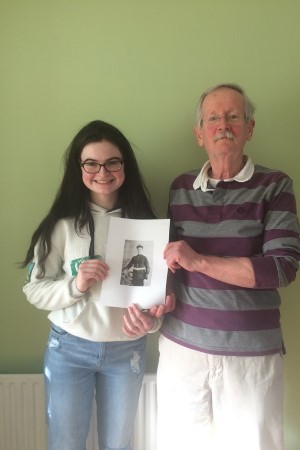
The Trip
The trip to Belgium was a whirlwind of memories and emotions. It's hard to convey what it felt like to stand in these cemeteries. It really hammered home the sheer number of deaths that occurred during the First World War. I know that you read about the figures but when you're out there you actually begin to put a perspective on it, when you're standing in these cemeteries and realise all these graves represent just a tiny fraction of the number of men who died.
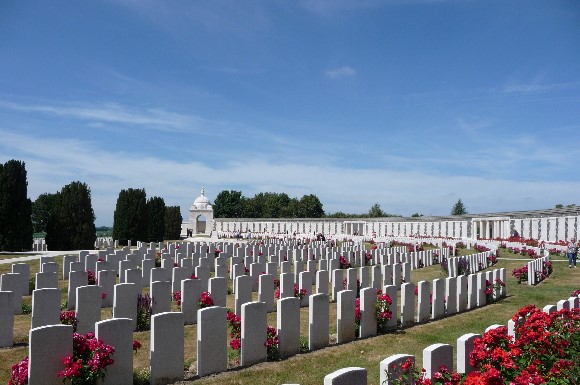
On the Friday we visited the German cemetery at Vladslo which again showed the death toll and highlighted the cruel nature of war. There are about 25,000 soldiers buried at Vladslo, with 20 soldiers per grave. In terms of figures that's my whole town, with my whole class in just one grave. It was sad and disheartening to see that the German soldiers' graves weren't as well kept as those of the Commonwealth soldiers, when they too had fought bravely and died in horrific conditions.
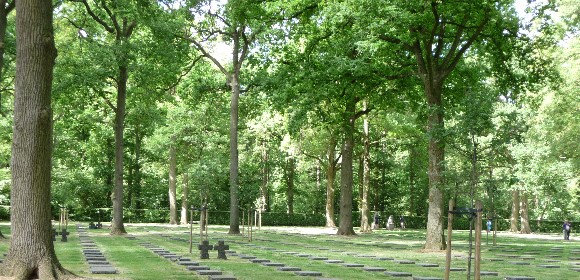
On the Thursday I visited my own soldiers grave, which was a surreal experience. I brought stones and soil from his house at Bogberry street to place on the grave. I was glad to be able to bring a piece of home to the grave of a man, who had died so far away from his home and family.
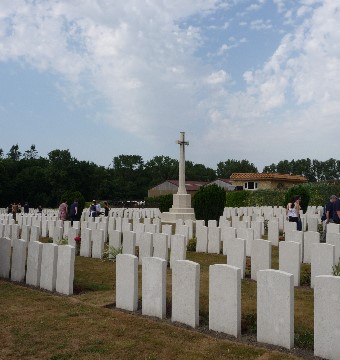
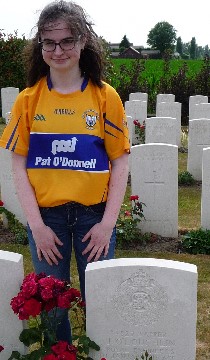
Our final stop on Thursday was a visit to a cell and execution site used by the British in Poperinge. It was heart-breaking to hear of soldiers being shot by their own comrades for 'cowardliness', one such soldier being Josh's own soldier. We entered the cell where the soldiers spent their last night before they were executed. It was horrible to imagine anyone being in that situation especially people as young as ourselves. Looking around the walls of the cell brought up conflicting emotions and thoughts, some of the carvings like names were things that wouldn't be amiss on a school desk, yet some were much darker. I couldn't fathom for the slightest how one would feel in that position alone and thousands of miles from home.
Finally, undoubtedly one of the best things of this trip was the fourteen new friends I have made out of it. I would be lying if I said I had not been worried about going on a trip with fourteen others I did not know, however these doubts were gone after the very first meeting. These are some of the kindest, funniest people I have met and I feel so privileged to have embarked on this project with them and to be able to call them my friends.
